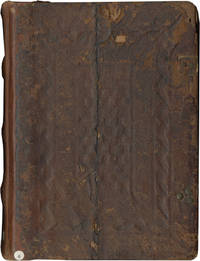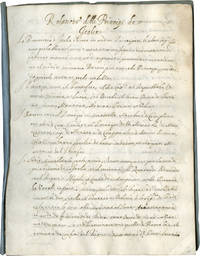Les Enluminures, Ltd.
Specializing in Western European Manuscripts, Text Manuscripts, Illuminated Manuscripts, Books of Hours, and Miniatures

About
Les Enluminures was founded in Paris in 1991 by Dr. Sandra Hindman in association with the Chicago-based business, and it has opened a new gallery in New York in May 2012. Specializing in manuscripts and miniatures from the Middle Ages and the Renaissance, the gallery also handles rings and jewelry from the same periods. It organizes four or five exhibitions a year, some in collaboration with other dealers and some traveling to other locations, and these are often accompanied by catalogues. Les Enluminures exhibits at many prestigious art and antique shows, including The European Fine Art Fair (TEFAF) in Maastricht, the Winter Antiques Show in New York, Masterpiece anf Frieze Masters in London, and Fine Arts Paris. International clients of the gallery include the Musée du Louvre in Paris, the Metropolitan Museum of Art in New York, the National Gallery of Art in Washington D.C., the J. Paul Getty Museum in Los Angeles, as well as many other institutional and private clients worldwide. SANDRA HINDMAN is a leading expert on Medieval and Renaissance manuscript illumination. Professor Emerita of Art History at Northwestern University and Owner of Les Enluminures, Paris, Chicago and NewYork, Professor Hindman is author, coauthor, or editor of more than ten books, as well as numerous articles on the history and reception of illuminated manuscripts and on medieval rings. These publications include The Robert Lehman Collection. IV. Illuminations (New York Metropolitan Museum of Art, 1997); Manuscript Illumination in the Modern Age: Recovery and Reconstruction (Mary and Leigh Block Museum of Art, 2001); and Toward an Art History of Medieval Rings: A Private Collection(Paris, 2007). Sandra Hindman is a member of the Antiquarian Booksellers’ Association of America, the National Antique and Art Dealers Association of America, the Syndicat National de la Librairie Ancienne et Moderne, and the Syndicat National des Antiquaires.Appraisals
Available for appraisals
Members

Recently Added Books

Mitsou: Quarante Images par Baltusz
by Balthus

Album Amicorum (Friendship Album), illustrated manuscript
by Sophie Beate Maximiliane von Seydlitz

Album amicorum of Marie Pacher
by Marie Pacher
Recently added catalogues
Omnipresent in the late Middle Ages and Renaissance, Books of Hours are often called the bestseller of the Middle Ages. Today they are one of the most common types of manuscript surviving from this era, found widely in public and private collections, and often reproduced.
If you consult Webster’s dictionary, you will learn that “The Bible” is the texts that are considered sacred by Jews and Christians, and also the physical object that includes these texts. This e-catalogue explores selective aspects of the Bible in the Middle Ages, seen through the lens of 14 manuscripts.
Legal and administrative records from public and private sources, or documents, might sound a little dry, or a little specialized. If that was your first thought, the items collected here in this short list will surprise you both with their immediacy (they all record things of real importance to everyone mentioned in their text) and, often, with their beauty, seen in their script, handsome notary marks, and even, at times, illumination.
DEAI initiatives (Diversity, Equity, Access, and Inclusion) ask us to think differently about building collections, particularly collections in academic institutions. At Les Enluminures we recognize that the process can at first seem especially challenging for manuscripts from the Middle Ages and Renaissance. But if you dig a little deeper, nothing is further from the truth.
This is the second e-catalogue in our series, “Exploring Text Manuscripts,” that includes manuscripts chosen because of their price. All 13 manuscripts are $15,000 or less; eight are less than $10,000. We all know that price can be the determining factor in an acquisition. For collectors on a budget, this group of manuscripts illustrates two categories of manuscripts that are worth considering carefully.
Association copies (books owned or annotated by their author, someone close to the author, or more broadly, by any notable individual) are prized by collectors of printed books. It is not ordinarily a term applied to medieval or Renaissance manuscripts, but we have recently been having fun with the concept, which underlines the fascination we all have with the people associated with every book, be it printed or copied by hand.
Manuscripts related to pastoral care (the church’s ministry for the spiritual welfare of the laity) were an important genre in the Middle Ages, serving the practical needs of the medieval clergy, and offering scholars and students today valuable insights into daily life in this period.
In this catalogue, we return to some of our favorite manuscripts from the extensive inventory on www.textmanuscripts.com to demonstrate how diverse, and often surprising, that inventory is.
Medieval manuscripts don’t have title pages neatly listing when and where they were written. But descriptions of these manuscripts always begin with this information. Have you ever wondered how that is possible? The short answer to that question is dated manuscripts. Just as some scribes signed their names (see our e-catalogue, “The ‘I’ in Manuscript”), some recorded when, and sometimes also where, they copied their manuscript (commonly the date when they finished their task).
Manuscripts come in all sizes. Size is one of the most important clues to how a book was used. It is also the most difficult attribute of a book to convey by means of digital images. This list includes the six smallest and six largest manuscripts (including one early printed book) from our Text Manuscripts site.
Historical writing in the Middle Ages and the Renaissance encompassed numerous genres; the eight manuscripts included here reflect this diversity. Carl Sagan has said, “You have to know the past to understand the present.” These manuscripts reveal that knowing how the past understood its own past, will allow us in turn to understand the past.
This short catalogue explores bindings as evidence of use and ownership through ten manuscripts, all in early bindings (seven in their original, or closely contemporary bindings). <br />



![[Latin Vulgate] Gospels, with marginal commentary on Matthew chapters 1-9 from THOMAS AQUINAS, Catena aurea in Matthaeum (The Golden Chain on Matthew)](https://d3525k1ryd2155.cloudfront.net/h/915/408/1611408915.0.m.jpg)














